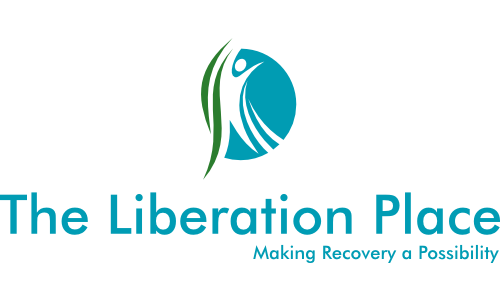The What Skills
The “What” skills are exactly how they sound; they tell us what it is we are supposed to we do when we practice mindfulness. Later, we will talk about the “How” skills, which once again are pretty self explanatory because they give us the guidelines for how we do it. Each What skill is a distinct activity that is designed to be understood, and then played out behaviourally separately. It is not the intention to combine them in any way. This gives us the framework for a mindfulness practice that can be incorporated into our daily activities, helping us to build Self-awareness through practice, every single day. In Dialectical Behaviour Therapy, (DBT), we learn how to access The What skills when we are doing things like walking, riding a bike, doing the dishes, mowing the lawn, or swimming.
Inside of these activities, we are then using each of the mindfulness What Skills to practice either Observing something, Describing what has been observed, or Participating in the specific moment we find ourselves in. We don’t try to do these things in conjunction with each other, they are completely separate activities and need to be practiced this way. If we DO try to practice them AT the same time, bouncing from one to the other, it will cause us to fall into the chaos of blended parts, all communicating at the same time, causing racing thoughts, and polarizations, leading to an inability to focus ON the situation from a one mindful perspective.
“It’s really important to recognize that while it is essential to have a solid cognitive understanding for each of these skills, they have to be practiced experientially over and over again every single day.”
~Steven Morris RP.
Before we go through each What skill separately, it’s really important to recognize that while it is essential to have a solid cognitive understanding for each of these skills, they have to be practiced experientially over and over again every single day. The essence of mindfulness from a DBT perspective is to develop and build the muscle that is our own self awareness. Hopefully, as adults, we are all aware that building any muscle takes hard work, along with lots and lots of practice. Without our participation in mindful activities every day, learning how to identify and detach from parts of our personality that are communicating in our thoughts, feelings, and physical sensations, we won’t be able to spot these parts when the chips are down and we really need to detach from them so we can avoid a particular ineffective behaviour.
OBSERVE
So, why is observing such a fundamental skill in the mindfulness aspect of Dialectical Behaviour Therapy? We have to start by understanding and accepting that developing your ability to mindfully observe what is happening around you, and more importantly within your personality system, is like walking across a room full of furniture with your eyes open, when previously they were closed. Either way you can walk across the room. However, it will be way more effective to do so with your eyes open. If you don’t like where the furniture is in the room, or even the look and style of it, you might want to close your eyes to avoid the hideous nature of how it looks, but ultimately, that’s not very effective. This is obviously because you will keep running into the furniture, probably hurting yourself as you blindly navigate your way around the room.
“If we are constantly living in the past or the future, we are probably missing out on the beauty of the present moment and generally, we are not really living to the amazing potential we all possess.”
~Steven Morris
This is a fantastic metaphor for the way we all walk through life with our eyes wide shut. Opening our eyes and actually observing what’s going on, in actuality, is obviously going to be extremely helpful. The good thing about observing from a mindful perspective is that it brings us into contact with the real, factual, present moment. It takes us away from our perceived version of reality, and into actuality, because after all, this is where we need to live, in the here and now. Spending our time trapped in the past generally leaves us wallowing in guilt and shame; while constantly jumping into the catastrophic expectations of the future leaves us debilitated by our fear of what might, or might not be.
DESCRIBE
Learning how to practice the DBT Skill of Observe can change behavior in any desired direction. Using the Describe skill to follow it provides a means of processing the information we have just Observed. Research has shown that describing and labeling our emotional experiences actually helps to regulate our emotions. In fact, brain imaging research has shown that when individuals begin to Describe their emotional responses, the very act of labeling the emotion changes the way the brain responds, moving away from emotional distress towards the direction of Emotion Regulation. Basically, the Describe Skill is putting words to our experiences. First, we Observe, then we Describe what we just Observed. However, the DBT Describe Skill involves sticking only with the facts, without judgement or agenda. We Describe from a place of compassion, and at times, curiosity, but as often as we can, we Describe without the subjective point of view that is attached to our stories from the past.
“Brain imaging research has shown that when individuals begin to Describe their emotional responses, the very act of labeling the emotion changes the way the brain responds, moving away from distress in the direction of Emotion Regulation.”
~Steven Morris RP.
An example of how we Describe things from a DBT perspective in the external world might be, if I am standing in a gallery, looking at a painting. As I examine the image in front of me, the words “landscape,” “green,” “yellow,” and “brush strokes” might come to mind. It’s simply applying basic descriptors to what’s there, to observe what is so and nothing else. I am not referencing whether this painting is good or bad, whether it is ugly or beautiful, those are all subjective points of view. An example of Describing an internal experience from this perspective would be, “I notice that there is a part of me that is sad right now.” Pay attention to the fact that I am not getting into the reasons why there is a part of me that’s sad, just labelling it simply as sad. Getting into why there is a part of me that feels sad or getting into a justification or judgement for the emotion itself, can involve our stories which, in many cases, are not based in actuality. I am simply describing the emotional experience of a part of my personality in this specific moment.
PARTICIPATE
The third and final part of the What skills revolves around entering wholly into an activity, but what does that mean? Whether it’s taking part in an activity like dancing, cleaning, or talking to a friend. Or if it is being with the experience of a specific feeling or emotion like happiness or sadness. It’s important to go through these things in a way that makes you present. In order to do this, we have to become one with whatever we are doing. In a way, completely forgetting ourselves, and throwing all of our attention into the moment. When we Participate from a DBT mindset, we act intuitively from wise mind, as though you are in “The Zone.” Do just what is needed in each situation. For example, a skillful dancer on the dance floor is one with the music that is playing and their connection with their partner, not being distracted by thoughts of being or doing something else or avoiding the experience completely. A really big part of participation has an aspect of “going with the flow” to it, while keeping in mind the principal difference between impulsivity and spontaneity.
“Throw yourself completely into activities. Don’t separate yourself from the events around you and interactions with people in your environment.”
~Steven Morris RP.
Getting into a Flow State is an important aspect of the DBT Participate skill. The state of “flow” is widely considered to be the ideal individual experience of any moment in time, as it is basically completely incompatible with the state of boredom. In fact, the state of flow is, more often than not, generally associated with an intense sense of joy and an innate and natural state of pleasure, that provides a subconscious feeling of the moment being completely under your control. This is often experienced when it comes to activities of sport, or art, or anything that you have the potential to become fully immersed in, like skiing, running, playing a musical instrument, or creating a piece of art. All of which can give you an experience of being lost in the moment, and a sense of your own maximized well-being that can almost translate as a sense of organic ecstasy.
So, throw yourself completely into activities. Don’t separate yourself from the events around you and interactions with people in your environment. Engage completely, immerse yourself in the moment, become involved, and opt in at every opportunity. Become one with what you are doing. Let go of your self-consciousness by acting opposite to it. Abandon yourself to the moment. Concentrate in a way that you and what you are doing merge together, as if there is only right now, only what you are doing. Act intuitively from a state of Wise Mind, doing just what is needed in each situation. Go with the flow and respond with spontaneity.
Download the What Skills PDF
Follow us on Social Media





